ASF Belgium: Financial troubles for swine farmers
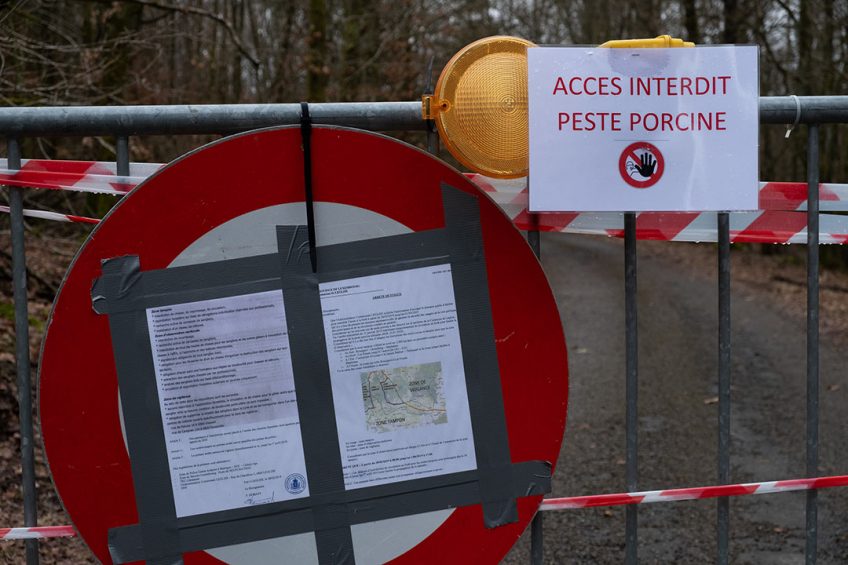
Despite the fact that the outbreaks of African Swine Fever have been restricted to wild boar, Belgian exports have halved. The price drop is putting a heavy burden on local swine producers and there doesn’t seem much room for a quick improvement.
The date of 13 September 2018 will be in the memory of many Belgian swine producers. It was the day that African Swine Fever (ASF) virus was found in a dead wild boar in the Ardennes forest, in the southern Belgian province Luxembourg. The main question was ‘how’? Initially the line of thought was an infected meat sandwich that had been thrown out of the window.
Alternative theory of how ASF got into Belgium
An alternative theory also quickly emerged, one of wild boar having been imported from Poland or the Czech Republic, which were then released in the forests. That theory now appears to be very well possible. In early February, a forest ranger and his son, were arrested for that. The forest ranger is under suspicion of, upon discovery of the carcass, having waited for several days before actually reporting it to the authorities.
It is not as easy to demonstrate a supposed Polish or Czech origin of the wild boar using DNA technology. According to Paul Cerpentier, vice president of the Belgian General Farmer’s Syndicate (ABS), the entire wild boar population in southern Belgium (also known as Wallonia) originates from a herd that was imported from Poland at the beginning of the 20th century.
ASF situation is not under control
At the beginning of 2019, it looked like the total number of shot and infected wild boar was gradually decreasing. The discovery of one infected carcass at the border of the inner monitoring zone and the report of 79 dead infected animals one week later, just demonstrated that the situation was all but under control. In mid-March there were 668 infected wild boar, with approximately 1,700 wild boar having been shot.
Figure 1 – Belgian pork exports (in tonnes) throughout 2018.Due to the ASF outbreaks in wild boar the numbers halved.

Wouter Wytynck, secretary at the sector group Pigs within the Belgian Farmers Association, explains: “We do not know exactly how many wild boar are around in the Ardennes. Initially it was estimated that there were 4,000 wild boar in the infected area, but now they speak of 6,000 altogether.
“As the area is both large as well as badly accessible, it can very well be that there are many more infected carcasses in the forests.”
The biggest fear is that part of the infected wild boar will survive the virus and will be come a resistant carrier. Or that offspring of these survivors will be resistant carriers. Mr Wytynck says, “The risk for that is relatively high, as 70 to 75% will survive an infection. At domesticated pigs, however, mortality figures will go up to 90-95%.”
Belgian pig industry is almost ruined
As a result of the outbreak the Belgian pig industry is financially almost ruined. The country has a self-sufficiency rate of 225% and therefore it is strongly dependant on exports. About 80% of the exports will stay within the EU, with Germany, Poland and the Netherlands being the biggest trading partners. As a consequence of ASF, however, the trade with third countries (outside the EU) has virtually vanished.
The exports to the Netherlands and Germany, however, are also influenced as buyers from Dutch and German slaughterhouses often want confirmation in writing that the meat did not come from Belgium. This exporting limitation ensues that slaughterhouses do not wish to pay as much for Belgian pigs.
The situation is getting difficult by now for many pig producers. Both at the Belgian Farmers Association as well as at the ABS, increasingly the names of farms are known which have entered an credit agreement with their feed company as they are no longer capable of paying their bills. It depends on the relationship between the feed mill and the individual farm as to how long they can continue doing that.
Pig farms paying their bills later
Koen Bernaerts is chairman of the sector group Pigs at the Belgian Farmers Association. In addition, he is also secretary of a manure processing cooperation. He notices that farms are increasingly getting into trouble. “More farms pay their bills later. We’ve also seen the first asking for extension of the payment terms. Included in that group are farms with a good reputation, farms which have always been doing well.”

In the meantime, the agricultural ministry has constructed a temporary guarantee fund for farms getting into acute financial difficulties. Until 31 May 2019, farms can apply for supporting funds if they can demonstrate having obvious damages due to ASF. The funds’ maximum extension is seven years, and the guarantee lasts three years.
Supporting pig farms to have animals culled
In late 2018, the Belgian authorities also supported farms by paying the bills for animal destruction by the company Rendac. It is unknown so far whether this year will see another of those regulations. Mr Wytynck estimates the total cost will be about € 3 million. Mr Cerpentier is worried though, saying: “The Rendac bill will increase this year anyway by 10-15% because of a disappointing fat market. Add to that upcoming general elections in May and we’ll have to see if the federal government is willing to support the pig producers once more.”
On top of that, the pig producers also have to deal with a fixed contribution to the Flemish Centre for Agro & Fisheries Marketing (VLAM). The contribution for the animal health fund was halved in 2018, but will have to be paid in full again in 2019.

Read more about pig health in the Pig Progress Health Tool
No sight of any improvement for Belgian pig farmers
With the surge of the number of found carcasses of wild boar, there is no sight of any improvement of the situation in the short term. Recently, there have been talks between Belgium, the Netherlands, Germany and China about conditions which will make exports possible under the condition that ASF is only found in wild boar.
Figure 2 – Development of pig prices in Belgium, the Netherlandsand Germany between August 2018 and April 2019.

That may alleviate the Belgians a little bit again. This will, however, require tremendous amounts of lobbying before such an agreement has been realised and before the first exports have truly been realised. In the most optimistic scenario, that would be August.
On top of this, there are talks about regionalisation. Mr Wytynck says, “There is a big challenge in that. Where to draw the line of the region that will be excluded? The border with the country Luxembourg as well as France – those are easy, but where to draw it on the other side? We really need to take a good look into that.”
‘End of savings is approaching quickly’
Immediately after the September outbreaks, the prices for finisher pigs dropped by € 0.08 in comparison to abroad. At the moment that price difference in comparison to other European countries is still around € 0.04 or € 0.05. He says, “For the 1,000 pigs I deliver every month, I will receive about € 5,000/month less. In autumn 2018 that difference was even bigger. This gap you can manage for some while, but the end of my savings is approaching quickly,” he explains. It is a severe setback as 2018 was about to become a year that was reasonable in terms of figures. He says, “We were breaking even and the prospects in summer for the remainder were not that bad at all. Well, since September things went downhill. In the last six months, there has been € 50,000 to € 60,000 less income. No management changes yetFor now, Mr Bernaerts has not chosen to change anything to his management. He says, “What we could do is change the moment we inseminate the sows but these animals will continue to eat and thus will cost me money. A few colleagues having only finisher pigs have just included fewer animals per round, but well, pushing back the insemination date will also cost money and will not give sufficient amounts of air to breathe on my farm.” As long as the ASF virus will stay in the southern Luxembourg province and will not hop to other provinces, Bernaerts is not too worried in terms of animal health on his farm. He is worried about the long-term future though. He says, “My daughter would like to succeed me – that does keep me awake at night. Should she do that? What kind of future will our farm have? Actually, what we should do is expand at a different location and only keep finisher pigs on this site. That will cost a lot and then I haven’t said anything yet about the permit application procedure. Should we even start the whole process, I wonder?” |
Virus going round in area without domestic pigsThe ASF outbreaks so far have remained restricted to Luxembourg province in the deep south of Belgium. By the end of September 2018 this area had 58 farms, of which 3 were professional pig farms, having in total 4,150 pigs. These animals all were culled; farm owners were compensated by a contribution from the animal health fund. In addition, they received a compensation for the fact that their buildings were empty. This week, the inner zone had to be expanded due to findings of wild boar. France in the meantime has been constructing a fence of 70 km at the border with Belgium to prevent infected wild boar from crossing over into France. |
Join 18,000+ subscribers
Subscribe to our newsletter to stay updated about all the need-to-know content in the pigsector, three times a week. Beheer
Beheer
 Koen Bernaerts has a two-site closed farrow-to-finish farm in Wuustwezel, Belgium. His farm has 500 sows and a 4,000 finisher capacity. The farm is relatively far away from the area where African Swine Fever (ASF) has been found. Yet the consequences are rather large for this Flemish swine producer.
Koen Bernaerts has a two-site closed farrow-to-finish farm in Wuustwezel, Belgium. His farm has 500 sows and a 4,000 finisher capacity. The farm is relatively far away from the area where African Swine Fever (ASF) has been found. Yet the consequences are rather large for this Flemish swine producer. 
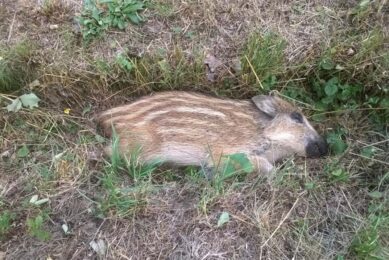
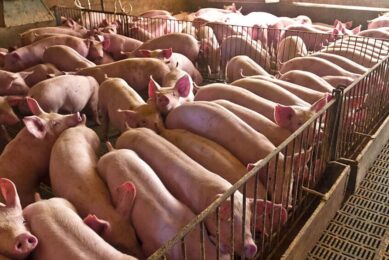
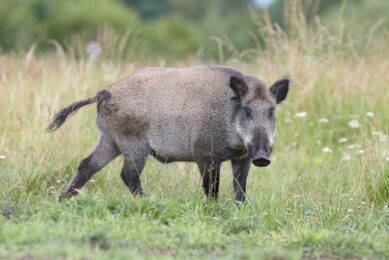
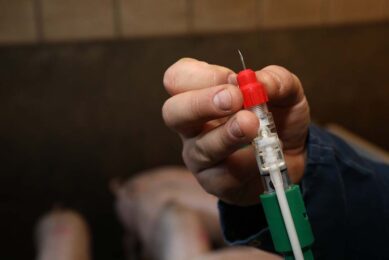





 WP Admin
WP Admin  Bewerk bericht
Bewerk bericht